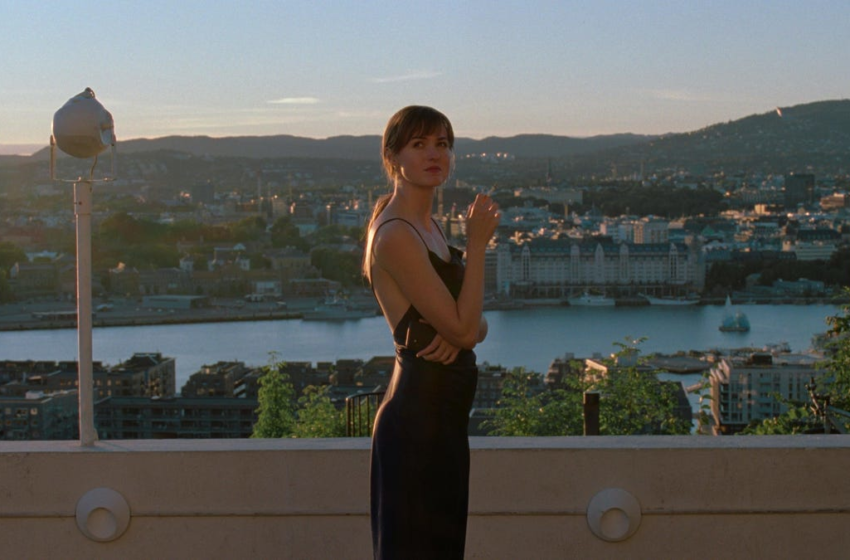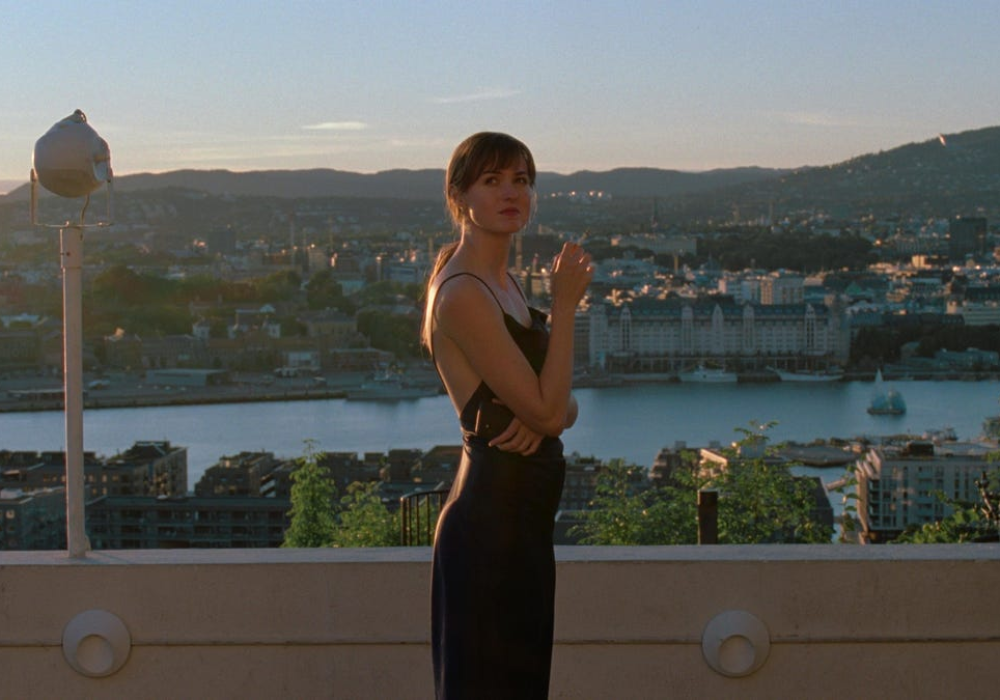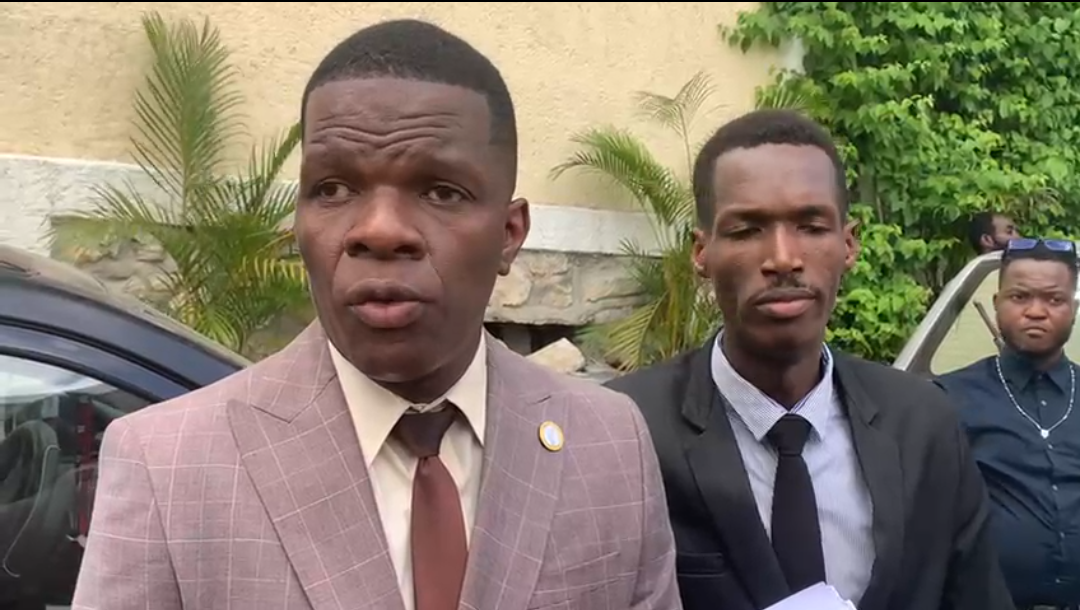
The big centerpiece sequence in The Worst Person In The World is a breathtaking flight of fancy: an explicit break from the reality this sensitive, energetic drama of thirtysomething confusion has established up to that point. Increasingly dissatisfied in her relationship, and unable to shake her attraction to someone new, Julie (Renate Reinsve) presses a button in her brain, and suddenly everything around her becomes a tableau she can race through—cars and pedestrians frozen in place, the neighborhood at a standstill, like in that old Twilight Zone episode about the stopwatch that stops time.
These kinds of flourishes are a speciality of Norwegian director Joachim Trier, who loves to find inventive ways to visualize what’s going on in his characters’ restless, racing minds. Here, screeching the world to a sudden halt becomes an expression of Julie’s nagging wish to put everything on pause, and to find a moment out of time to entertain thoughts of something different. Who hasn’t yearned for a time out, just a fleeting respite from the endless forward charge of life and its tough decisions? This stylish daydream is also a nifty, lyrical way to capture that feeling of euphoria that can come over you when you realize you’re ready to end one romance and start another. (Think the bittersweet glee of Robyn’s “Call Your Girlfriend,” via images instead of words.)
In simplest terms, the film could be described as a love triangle, pitting Julie’s comfortable present with her brainy, stable, introverted comic-book-artist boyfriend, Aksel (Anders Danielsen Lie), against all the intriguing possibilities of a future with Eivind (Herbert Nordrum), the handsome, friendly, younger stranger she meets by chance at a party she crashes. But Julie’s options aren’t really so binary. At her age, life is an endless series of diverging roads. Worst Person underlines that immediately, opening with a rush of incident that covers her time as a college freshman to her late 20s in one flowing montage, as she shuffles through boyfriends, majors, and hair colors.
Trier, working with his steadfast co-writer Eskil Vogt, divides The Worst Person In The World into 12 distinct chapters, plus a prologue and an epilogue. Like one of their previous collaborations, the undervalued Louder Than Bombs, the movie plays like a literary adaptation with no actual source material. It sprawls and digresses. On Julie’s 30th birthday, the camera strays like a wandering mind to a row of family photos, as an unidentified narrator starts rattling off everything her ancestors accomplished at her age. It’s a typically novelistic device, deployed to ask a larger question: How much of our lives are determined by the expectation put on us (or that we put on ourselves) to reach imaginary benchmarks? Trier poses it earlier, too, during a weekend with married, childed fortysomethings—an anecdote that underscores the differences in Julie and Aksel’s priorities, as determined by the gap in age between them.
One of the joys of Trier’s work is how he seems to have absorbed all the cool tricks of ’90s hotshot film-school renegades and filtered them through his own sensitive sensibilities. He’s like a bookish, bohemian Danny Boyle. In The Worst Person In The World, Trier expands and contracts time, accordion-style, to communicate how life itself can feel speed ramped, passing in a blur one minute and slowing to a crawl in another. Not all of his MTV-indebted gambits pay off. The film’s biggest swing and miss is an embarrassingly over-the-top drug trip sequence that swirls Julie’s unresolved issues into a hallucinatory nightmare reverie more goofy than anything else.
For all of Trier’s stylistic flair, the best scenes in The Worst Person In The World are unadorned conversations, little pockets of chemistry or conflict. The film peaks with a self-contained romantic episode, beautifully written and performed: the all-night meet cute between Julie and Eivind, who turn their promise not to cheat on their significant others into a seductive game of chicken, the two inching closer as they inch towards dawn. (Trier craftily stages one portion of their extended flirtation with infidelity in a bedroom that’s doubling as the coatroom, with regular intrusions by other guests coming to retrieve their belongings.) Later, the film mirrors this miniature rom-com with a realistically protracted breakup scene, punctuated with a declaration of paradoxical clarity: “Yes, I love you. But I also don’t love you.”

Trier has billed Worst Person as the closing installment of his “Oslo trilogy,” completing a thematically linked study of young adulthood in the big city that began with his electrifying debut, Reprise, and continued with the soulfully perceptive recovery drama Oslo, August 31st. The point of overlap is Danielsen Lie, the soft-spoken actor whose prominent role in all three films creates the impression of a coming-of-age story told across decades, exploring the growing pains of one’s 20s, 30s, and now 40s. Trier can’t seem to resist eventually ceding Worst Person to the older Asker, with a melancholy subplot that pulls him to the center and a whole lament for a past era’s disappearing values delivered via extended maudlin monologue. It’s tempting to conclude that Trier is simply retreating to a perspective closer to his own, male and middle-aged. But this is also a film about squaring generational differences—about how worldviews change as doors start shutting along the way.
Trier never does quite seem to figure out who Julie is, deep down. Maybe that’s okay. Julie, after all, is still figuring out who she is, too. Reinsve, who won the Best Actress prize at Cannes last summer, grounds the film in her ongoing journey of self-discovery, with all its shifting desires and realigned priorities. You can track a dramatic arc entirely through the emotions dancing across her face during a tedious party with Asker’s friends or a chance reunion in the book store where she works. Even when The Worst Person In The World veers off course, her performance snaps it back to a truth of adulthood as a work in progress. Forget these two men. It’s a thousand different versions of her life that Julie’s really weighing—all the alternate futures that lay before us as we blindly steer down one fork in the road at the expense of another.










